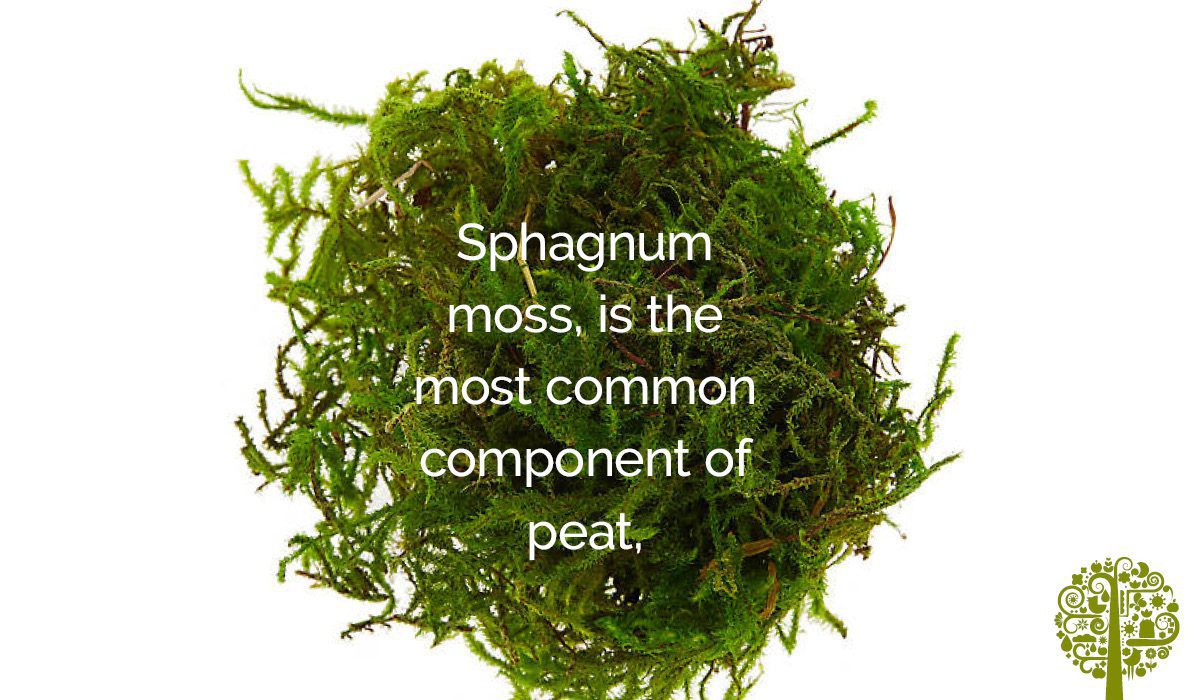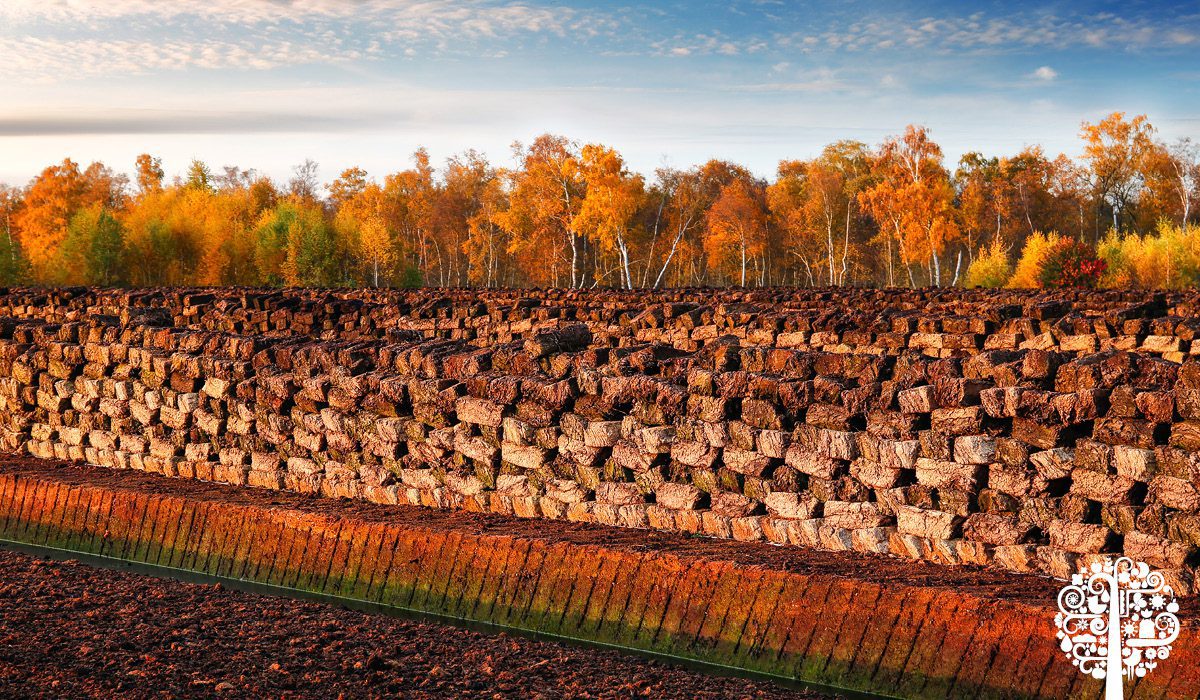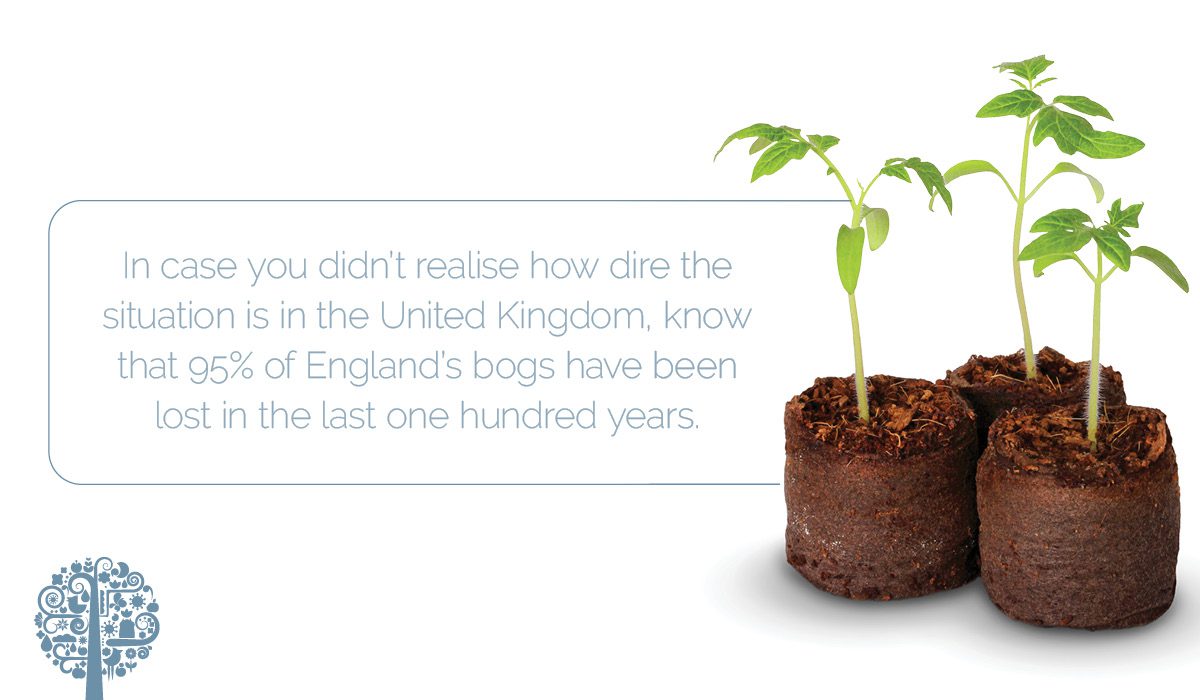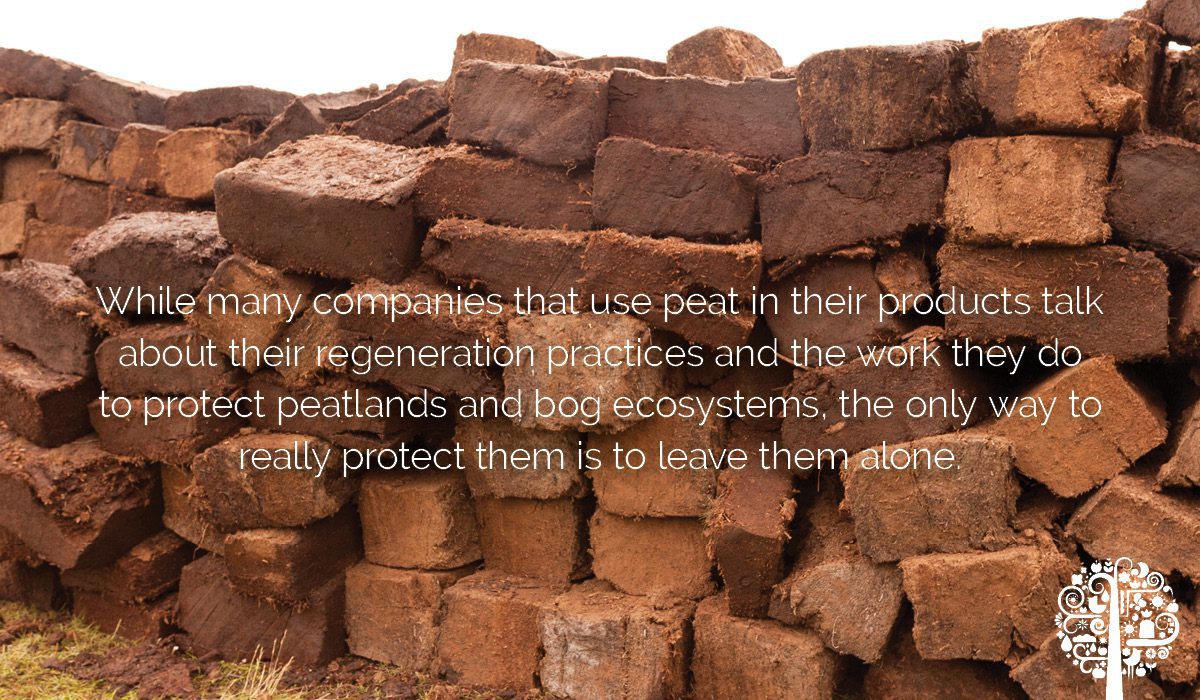Some gardeners swear by it while others will tell you to stay as far away from it as possible. There are huge companies producing tons of the stuff and there are countries around the world banning its use. Peat is one of the most controversial topics, and products, in the gardening world these days, with people on both sides of the fence. But given the facts, one side of the fence is starting to look a lot better than the other.
What is Peat?
Over thousands of years in bogs around the world, the decomposition of water-submerged plants has created the soil we call peat. To harvest the peat, companies will temporarily dry out a bog then vacuum it up. It is then dried some more, screened and pressed into bales.
Also, while people often use the terms interchangeably, it should be noted that peat and peat moss isn’t exactly the same thing. Peat moss, or sphagnum moss, is the most common component of peat, although other plants can be a part of the decayed material.
The Good
Dating back to the 1940s, gardeners have touted the benefits of peat, and most potting soils you buy will have a percentage of peat moss mixed in because it does offer some very beneficial things to plants and gardens. It retains up to 20 times its weight in moisture and releases it efficiently to the plants and the garden. Peat also has the ability to hold onto nutrients in the soil, keeping them from just washing away.
The Bad
If it really is that great, what’s the problem? The problem is that while peat might be good for gardens, it isn’t good for our planet. Well, let me rephrase that. Peat is great for our planet, but only when left in the peat bogs in its natural state.
Peat releases carbon dioxide, but when in its natural peat bog habitat, the bog maintains a balance by capturing and holding onto the CO2 and not allowing it to release into the environment. When the peat is removed from the bogs, all bets are off.

The global peatlands are the most efficient carbon sink on the planet and the numbers are incredible. Peat covers just 3% of the land’s surface, but stores one-third of our planet’s soil carbon. The draining of peatlands can also negatively affect a population’s drinking water due to pollution from dissolved compounds.
That doesn’t even take into account the wildlife that depends on it. From hen harriers to short-eared owls and many more, a swath of life on this planet relies on this very specific peat bog ecosystem. According to the International Union for Conservation of Nature, the destruction of its peat swamp habitat can be greatly attributed to the 60% decline of the Bornean Orangutan population over just the last 60 years.
In fact, some scientists say these peatland ecosystems are just as essential and as fragile as the rain forests. But instead of holding concerts to raise money to save the peatlands, we are continuing to farm and harvest them.
The Ugly
Peat is a huge business, with the industry expected to reach $12.3 billion by 2027. Although, that number might have to be revised given recent revisions that happened due to the COVID-19 pandemic. The original estimates for 2020 were expected to be in the $4.8 billion range, but the pandemic and the rise in gardening and home growing forced the industry to revise those numbers to near $12 billion last year.
And where there are companies making millions of dollars, there’s going to be companies doing anything they can to keep making millions of dollars, which includes questionable “scientific” studies and the “greenwashing” of facts. One of those “facts” being the question of peat being a renewable resource or not.
More and more science is suggesting that peat isn’t a renewable resource. Technically, the stuff does grow back, but it does so at a rate of just .04 inches per year – which in industrialized countries, can’t keep up with the rate at which it is harvested. Therefore, peat is NOT a renewable resource. Add to that the reports suggesting that peat automatically grows back in only about 30-40% of farmed peatlands.

You will also hear folks on the pro-peat side of the fence touting studies and research showing that farmed bog ecosystems can be reclaimed. And while that’s true, it works if only part of the peat layer has been harvested. Again, regardless of how much grows back, how fast it grows back and how much of the ecosystem can be reclaimed, none of that helps with all the CO2 being released during the harvesting process and later on when the peat is used by gardeners.
So, what are we doing about it?
The UK Ban
In case you didn’t realize how dire the situation is in the United Kingdom, know that 95% of England’s bogs have been lost in the last one hundred years. And while gardens and gardening are a culprit, much of the peat harvested from England’s bogs over the last century was burned for fuel.
The government in the UK has been eyeing a solution for over a decade now, and come 2024, UK gardeners won’t be using peat anymore. Announced in 2011, the ban was originally set out as voluntary, but when that didn’t see the changes the government had hoped for, it became mandatory. In 2024, all sales of peat compost to gardeners will end, with a total horticultural ban in the plans for a few years down the road. And the movement is already growing.
Britain’s Royal Horticultural Society, the largest gardening organization in the world, has reduced peat use by 97% at its four major gardens and has been asking its members to follow their lead. But that’s not all.

The UK government has also announced plans to invest in tree planting and the restoration of peatlands. The announced numbers are 35,000 hectares by 2025. And while that’s only 1% of the UK total, at least it’s something. There’s also a plan to reintroduce and recover various wildlife that was previously lost to England.
How much gets done, and when, is still a wait-and-see scenario, but at least they seem to be headed in the right direction, unlike their North American neighbors.
Peat Still Going Strong in North America
We loved Monty Python, we screamed for The Beatles, and we couldn’t get enough of Downton Abbey, but in North America, we have yet to show our support for the peat ban taking shape across the pond.
This might be because, unlike in the UK, the numbers aren’t as dire in Canada and the US. Canada alone has over 200 million acres of intact peatlands, but that doesn’t mean the country can sit back and do nothing. Canada needs to get on this before it gets to 95% like in the UK.
Not only is Canada not banning peat, but it’s also using it in more than just gardens and potting mixes.

You’ll find peat in many grass and lawn fertilizer and even in septic systems. In fact, one popular filter option on the market includes a coco and peat moss combo. The company behind the system claims it has the lowest carbon footprint of any comparable product on the market. However, there is no indication that those claims take into account the amount of CO2 that gets released into the environment when they harvest the peat used in these septic filter systems.
While many companies that use peat in their products talk about their regeneration practices and the work they do to protect peatlands and bog ecosystems, the only way to really protect them is to leave them alone.
Alternatives
Just because governments in North America aren’t putting a stop to peat, that doesn’t mean we, as citizens, can’t. Many top-notch alternatives exist, from wood waste to compost. Even pine needles and leaf mold are options. But according to many, the best peat alternative is coconut coir, which are the fibers that have been removed from wet and softened coconut husks and then dried out.
When peat first began being used by gardeners around the world, both big and small, it did a lot of good for crops and we didn’t really know any better. But today, we don’t have that as an excuse anymore. Today, the bad and the ugly far outweigh the good and now that we know better, we need to do better.